12:21 PM 7/24/2020

____________________________________________________
 Audio News: | VOA Newscasts | NPR News Now | NPR News Now On RSS Dog |
Audio News: | VOA Newscasts | NPR News Now | NPR News Now On RSS Dog |
Michael Novakhov – SharedNewsLinks℠ | Michael Novakhov – SharedNewsLinks℠ – on RSS Dog | Michael Novakhov – SharedNewsLinks℠ – In Brief | Trump Investigations News In Brief – http://feed.informer.com/share/CGD4YTZW07 | Trump Investigations News – Page Link – News In Brief | Tweets | Videos | Michael Novakhov – SharedNewsLinks℠ – Page
___________________________________________________________
Selected and Editorial Posts
THE REAL COUP WAS IN 2016 | THE PSYCHOANALYSIS OF INTELLIGENCE OPERATIONS
____________________________________________________
Check out C-SPAN’s Impeachment Inquiry Page: https://www.c-span.org/impeachment |
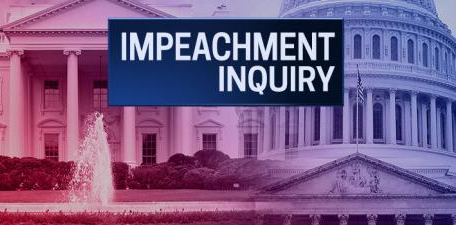
Post Link | C-SPAN has launched a new web page, c-span.org/impeachment, devoted to Congress’ impeachment inquiry into President Donald Trump. The goal is to provide one-stop shopping for all of C-SPAN’s coverage of the inquiry, including the latest Hill tweets, various news conferences and hearings, and the Trump Administration’s response.
» Saved Stories – None: C-SPAN Launches Impeachment Coverage Page
22/10/19 07:34 from Saved Stories from Michael_Novakhov (1 sites)
C-SPAN has launched a new web page, c-span.org/ impeachment , devoted to Congress’ impeachment inquiry into President Donald Trump. The goal … Saved Stories – None
22/10/19 07:34 from Saved Stories from Michael_Novakhov (1 sites)
C-SPAN has launched a new web page, c-span.org/ impeachment , devoted to Congress’ impeachment inquiry into President Donald Trump. The goal … Saved Stories – None
_______________________________________________
» Saved Stories - None: Coronavirus Live Updates: C.D.C. Issues New Schools Guidance
24/07/20 11:37 from Saved Stories from Michael_Novakhov (1 sites)
A new C.D.C. statement on schools calls for reopening and downplays the potential health risks. The top U.S. public health agency issued a full-throated call to reopen schools in a package of new “resources and tools” posted ...
24/07/20 11:37 from Saved Stories from Michael_Novakhov (1 sites)
A new C.D.C. statement on schools calls for reopening and downplays the potential health risks. The top U.S. public health agency issued a full-throated call to reopen schools in a package of new “resources and tools” posted ...
» Saved Stories - None: FOX News: Robert E. Lee statue, eight Confederate busts removed from Virginia Capitol
24/07/20 11:19 from Saved Stories from Michael_Novakhov (1 sites)
A life-size statue of General Robert E. Lee along with the busts of eight of his Confederate colleagues were removed from Virginia's Capitol late Thursday and early Friday. FOX News Saved Stories - None
24/07/20 11:19 from Saved Stories from Michael_Novakhov (1 sites)
A life-size statue of General Robert E. Lee along with the busts of eight of his Confederate colleagues were removed from Virginia's Capitol late Thursday and early Friday. FOX News Saved Stories - None
» Saved Stories - None: "fbi" - Google News: FBI warns US companies about backdoors in Chinese tax software - ZDNet
24/07/20 11:18 from Saved Stories from Michael_Novakhov (1 sites)
FBI warns US companies about backdoors in Chinese tax software ZDNet "fbi" - Google News Saved Stories - None
24/07/20 11:18 from Saved Stories from Michael_Novakhov (1 sites)
FBI warns US companies about backdoors in Chinese tax software ZDNet "fbi" - Google News Saved Stories - None
» Saved Stories - None: The National Interest: Random Sampling Suggests COVID-19 Is 6 Times Deadlier Than Flu
24/07/20 11:18 from Saved Stories from Michael_Novakhov (1 sites)
Nir Menachemi Public Health, North America From April 25 to May 1, our team randomly selected and tested thousands of Indiana residents, no matter if they’d been sick or not. From this testing we were able to get some of the first truly ...
24/07/20 11:18 from Saved Stories from Michael_Novakhov (1 sites)
Nir Menachemi Public Health, North America From April 25 to May 1, our team randomly selected and tested thousands of Indiana residents, no matter if they’d been sick or not. From this testing we were able to get some of the first truly ...
» Saved Stories - None: The National Interest: 95 Percent Casualties: Why It Was So Hard to Stop the Nazis From Laying Siege to Leningrad
24/07/20 11:17 from Saved Stories from Michael_Novakhov (1 sites)
Warfare History Network History, Europe The battle lasted years and killed millions. Key Point: The Soviets would lose an entire army when trying to save the city. In fact, multiple offensives would fail, although eventually Moscow woul...
24/07/20 11:17 from Saved Stories from Michael_Novakhov (1 sites)
Warfare History Network History, Europe The battle lasted years and killed millions. Key Point: The Soviets would lose an entire army when trying to save the city. In fact, multiple offensives would fail, although eventually Moscow woul...
» Saved Stories - None: "fbi" - Google News: FBI: Illegal Attempts to Buy Guns Skyrocketed When Coronavirus Pandemic Began - Officer
24/07/20 11:17 from Saved Stories from Michael_Novakhov (1 sites)
FBI: Illegal Attempts to Buy Guns Skyrocketed When Coronavirus Pandemic Began Officer "fbi" - Google News Saved Stories - None
24/07/20 11:17 from Saved Stories from Michael_Novakhov (1 sites)
FBI: Illegal Attempts to Buy Guns Skyrocketed When Coronavirus Pandemic Began Officer "fbi" - Google News Saved Stories - None
» Saved Stories - None: The National Interest: Wrecked: How Churchill's Mini-Subs Destroyed Hitler's Battleship Tirpitz
24/07/20 11:16 from Saved Stories from Michael_Novakhov (1 sites)
Warfare History Network History, Europe The difficult operation paid off for London and caused much anguish in Berlin. Key point: The battleship was injured by mulitple mini-submarines. Shortly thereafter, the Royal Navy's carriers sent...
24/07/20 11:16 from Saved Stories from Michael_Novakhov (1 sites)
Warfare History Network History, Europe The difficult operation paid off for London and caused much anguish in Berlin. Key point: The battleship was injured by mulitple mini-submarines. Shortly thereafter, the Royal Navy's carriers sent...
» Saved Stories - None: Defense One - All Content: The November Election Is Going to Be a Mess
24/07/20 11:16 from Saved Stories from Michael_Novakhov (1 sites)
Disaster is avoidable—if lawmakers act now. Defense One - All Content Saved Stories - None
24/07/20 11:16 from Saved Stories from Michael_Novakhov (1 sites)
Disaster is avoidable—if lawmakers act now. Defense One - All Content Saved Stories - None
» Saved Stories - None: Security Boulevard: What Twitter Attack Says on Human Nature, Social Engineering
24/07/20 11:15 from Saved Stories from Michael_Novakhov (1 sites)
Last week, Twitter suffered a breach that led to the compromise of numerous high-profile accounts, including those of Barak Obama, Joe Biden, Jeff Bezos and Elon Musk. I took the opportunity to speak with Nir... The post What Twitter Att...
24/07/20 11:15 from Saved Stories from Michael_Novakhov (1 sites)
Last week, Twitter suffered a breach that led to the compromise of numerous high-profile accounts, including those of Barak Obama, Joe Biden, Jeff Bezos and Elon Musk. I took the opportunity to speak with Nir... The post What Twitter Att...
» Saved Stories - None: "cia" - Google News: LIPSON: A Put-Up Job: The FBI, CIA, Mueller, and Schiff Investigate Trump-Russia Collusion - Yall Politics
24/07/20 11:15 from Saved Stories from Michael_Novakhov (1 sites)
LIPSON: A Put-Up Job: The FBI, CIA, Mueller, and Schiff Investigate Trump-Russia Collusion Yall Politics "cia" - Google News Saved Stories - None
24/07/20 11:15 from Saved Stories from Michael_Novakhov (1 sites)
LIPSON: A Put-Up Job: The FBI, CIA, Mueller, and Schiff Investigate Trump-Russia Collusion Yall Politics "cia" - Google News Saved Stories - None
» Saved Stories - None: Just Security: The President’s Private Army
24/07/20 11:14 from Saved Stories from Michael_Novakhov (1 sites)
It doesn’t take a legal expert to know that what’s happening in Portland, Oregon is an abuse of power. When unidentified federal forces dressed as soldiers pull people off the streets into unmarked vans, something is gravely wrong. What’...
24/07/20 11:14 from Saved Stories from Michael_Novakhov (1 sites)
It doesn’t take a legal expert to know that what’s happening in Portland, Oregon is an abuse of power. When unidentified federal forces dressed as soldiers pull people off the streets into unmarked vans, something is gravely wrong. What’...
» Saved Stories - None: "cia" - Google News: Don’t Rush to Judge the CIA’s Covert Cyber Offensive - World Politics Review
24/07/20 11:14 from Saved Stories from Michael_Novakhov (1 sites)
Don’t Rush to Judge the CIA’s Covert Cyber Offensive World Politics Review "cia" - Google News Saved Stories - None
24/07/20 11:14 from Saved Stories from Michael_Novakhov (1 sites)
Don’t Rush to Judge the CIA’s Covert Cyber Offensive World Politics Review "cia" - Google News Saved Stories - None
» Saved Stories - None: "fbi" - Google News: Inside the San Antonio FBI - WOAI
24/07/20 11:14 from Saved Stories from Michael_Novakhov (1 sites)
Inside the San Antonio FBI WOAI "fbi" - Google News Saved Stories - None
24/07/20 11:14 from Saved Stories from Michael_Novakhov (1 sites)
Inside the San Antonio FBI WOAI "fbi" - Google News Saved Stories - None
» Saved Stories - None: "International Security" - Google News: Will NATO still be relevant in the future? - Atlantic Council
24/07/20 11:13 from Saved Stories from Michael_Novakhov (1 sites)
Will NATO still be relevant in the future? Atlantic Council "International Security" - Google News Saved Stories - None
24/07/20 11:13 from Saved Stories from Michael_Novakhov (1 sites)
Will NATO still be relevant in the future? Atlantic Council "International Security" - Google News Saved Stories - None
» Saved Stories - None: The National Interest: Pandemic Problem: Trump’s Historical Mistake Dooms His Reelection Prospects
24/07/20 11:13 from Saved Stories from Michael_Novakhov (1 sites)
Amitai Etzioni Politics, Americas The president prioritized the economy over his people—and he will pay for that at the polls. Social scientists like myself tend to play down the role of personalities in history, instead paying more mind...
24/07/20 11:13 from Saved Stories from Michael_Novakhov (1 sites)
Amitai Etzioni Politics, Americas The president prioritized the economy over his people—and he will pay for that at the polls. Social scientists like myself tend to play down the role of personalities in history, instead paying more mind...
» Saved Stories - None: "International Security" - Google News: Who’s afraid of China’s big bad wolf warriors? - The Australian
24/07/20 11:12 from Saved Stories from Michael_Novakhov (1 sites)
Who’s afraid of China’s big bad wolf warriors? The Australian "International Security" - Google News Saved Stories - None
24/07/20 11:12 from Saved Stories from Michael_Novakhov (1 sites)
Who’s afraid of China’s big bad wolf warriors? The Australian "International Security" - Google News Saved Stories - None
» Saved Stories - None: Window on Eurasia -- New Series: Kremlin Now Using Third-Party Lawsuits to Bankrupt Those who Oppose It, Agora Report Says
24/07/20 11:12 from Saved Stories from Michael_Novakhov (1 sites)
Paul Goble Staunton, July 22 – The Kremlin has found a new wave to go after its political opponents: using suits by third parties to bankrupt and thus hobble them, even a...
24/07/20 11:12 from Saved Stories from Michael_Novakhov (1 sites)
Paul Goble Staunton, July 22 – The Kremlin has found a new wave to go after its political opponents: using suits by third parties to bankrupt and thus hobble them, even a...
» Saved Stories - None: "russia" - Google News: Russia c.bank chief gives online press conference after rate decision - Reuters UK
24/07/20 11:11 from Saved Stories from Michael_Novakhov (1 sites)
Russia c.bank chief gives online press conference after rate decision Reuters UK "russia" - Google News Saved Stories - None
24/07/20 11:11 from Saved Stories from Michael_Novakhov (1 sites)
Russia c.bank chief gives online press conference after rate decision Reuters UK "russia" - Google News Saved Stories - None
» Saved Stories - None: "Turkey and Russia" - Google News: Is Erdogan’s ability to turn superpower rivalry to advantage diminishing? - Al-Monitor
24/07/20 11:11 from Saved Stories from Michael_Novakhov (1 sites)
Is Erdogan’s ability to turn superpower rivalry to advantage diminishing? Al-Monitor "Turkey and Russia" - Google News Saved Stories - None
24/07/20 11:11 from Saved Stories from Michael_Novakhov (1 sites)
Is Erdogan’s ability to turn superpower rivalry to advantage diminishing? Al-Monitor "Turkey and Russia" - Google News Saved Stories - None
» Saved Stories - None: Europe: Germany to beef up financial regulation after Wirecard scandal
24/07/20 11:10 from Saved Stories from Michael_Novakhov (1 sites)
BaFin will be given ‘sovereign powers’ to intervene directly in public companies Europe Saved Stories - None
24/07/20 11:10 from Saved Stories from Michael_Novakhov (1 sites)
BaFin will be given ‘sovereign powers’ to intervene directly in public companies Europe Saved Stories - None
» Saved Stories - None: Europe: Restrictions return in Spain as coronavirus infections spike again
24/07/20 11:10 from Saved Stories from Michael_Novakhov (1 sites)
Outbreaks trace to seasonal farm work, family gatherings and nightclubs — with 100 cases linked to one party setting. Europe Saved Stories - None
24/07/20 11:10 from Saved Stories from Michael_Novakhov (1 sites)
Outbreaks trace to seasonal farm work, family gatherings and nightclubs — with 100 cases linked to one party setting. Europe Saved Stories - None
» Saved Stories - None: Chechen leader Kadyrov announces retaliatory sanctions on US secretary of state after Washington targets his family
24/07/20 10:33 from Saved Stories from Michael_Novakhov (1 sites)
The head of Chechnya has announced the imposition of “all the sanctions in the republic” against US Secretary of State Mike Pompeo. Ramzan Kadyrov says it’s in response to Washington’s latest measures against his relatives. On July 20, t...
24/07/20 10:33 from Saved Stories from Michael_Novakhov (1 sites)
The head of Chechnya has announced the imposition of “all the sanctions in the republic” against US Secretary of State Mike Pompeo. Ramzan Kadyrov says it’s in response to Washington’s latest measures against his relatives. On July 20, t...
» Saved Stories - None: Germany, seeking independence from U.S., pushes cyber security research
24/07/20 10:26 from Saved Stories from Michael_Novakhov (1 sites)
FILE PHOTO: A German flag is seen on the laptop screen in front of a computer screen on which cyber code is displayed, in this illustration picture taken March 2, 2018. REUTERS/Kacper Pempel/Illustration BERLIN (Reuters) - Germany announ...
24/07/20 10:26 from Saved Stories from Michael_Novakhov (1 sites)
FILE PHOTO: A German flag is seen on the laptop screen in front of a computer screen on which cyber code is displayed, in this illustration picture taken March 2, 2018. REUTERS/Kacper Pempel/Illustration BERLIN (Reuters) - Germany announ...
» Saved Stories - None: Germany: New cyber command 'will take action' against cyber attacks - DefMin - YouTube
24/07/20 10:23 from Saved Stories from Michael_Novakhov (1 sites)
Germany: New cyber command 'will take action' against cyber attacks - DefMin Saved Stories - None
24/07/20 10:23 from Saved Stories from Michael_Novakhov (1 sites)
Germany: New cyber command 'will take action' against cyber attacks - DefMin Saved Stories - None
» Saved Stories - None: 9:10 AM 7/24/2020 - COVID-19 and Bioweapons Research | Coronavirus and cybercrime: Germany assumes EU presidency with strong focus on cybersecurity | America ranked among worst countries to raise a family, study says
24/07/20 09:18 from Saved Stories from Michael_Novakhov (1 sites)
July 24, 2020 9:10 AM 7/24/2020 JULY 24, 2020 COVID-19 and Bioweapons Research by SEIJI YAMADA Facebook Twitter Reddit Email The anthrax attacks of 2001 were carried out via mail. Anthrax was sent via the US Postal Service ...
24/07/20 09:18 from Saved Stories from Michael_Novakhov (1 sites)
July 24, 2020 9:10 AM 7/24/2020 JULY 24, 2020 COVID-19 and Bioweapons Research by SEIJI YAMADA Facebook Twitter Reddit Email The anthrax attacks of 2001 were carried out via mail. Anthrax was sent via the US Postal Service ...
» Saved Stories - None: Google Alert - sars cov 2 as bioweapon: COVID-19 and Bioweapons Research
24/07/20 09:00 from Saved Stories from Michael_Novakhov (1 sites)
The anthrax attacks of 2001 were carried out via mail. Anthrax was sent via the US Postal Service to members of Congress and media executives ... Google Alert - sars cov 2 as bioweapon Saved Stories - None
24/07/20 09:00 from Saved Stories from Michael_Novakhov (1 sites)
The anthrax attacks of 2001 were carried out via mail. Anthrax was sent via the US Postal Service to members of Congress and media executives ... Google Alert - sars cov 2 as bioweapon Saved Stories - None
» Saved Stories - None: Google Alert - Coronavirus and US Military: The New Cold War Heats Up
24/07/20 08:59 from Saved Stories from Michael_Novakhov (1 sites)
The build up of US -Nato forces continues unabated around the Black Sea and ... biggest coronavirus outbreak within the U.S. military anywhere in the world . . . [on July 16] U.S. Forces Japan confirmed another 36 infections among ....
24/07/20 08:59 from Saved Stories from Michael_Novakhov (1 sites)
The build up of US -Nato forces continues unabated around the Black Sea and ... biggest coronavirus outbreak within the U.S. military anywhere in the world . . . [on July 16] U.S. Forces Japan confirmed another 36 infections among ....
» Saved Stories - None: The evidence supports the ability of dogs and cats to seroconvert when living as pets in a COVID-19 positive household and in regions with high burden of human disease.news-medical.net/news/20200724/…
24/07/20 08:58 from Saved Stories from Michael_Novakhov (1 sites)
The evidence supports the ability of dogs and cats to seroconvert when living as pets in a COVID-19 positive household and in regions with high burden of human disease. news-medical.net/news/20200724/… Posted by mikenov on Friday, July 2...
24/07/20 08:58 from Saved Stories from Michael_Novakhov (1 sites)
The evidence supports the ability of dogs and cats to seroconvert when living as pets in a COVID-19 positive household and in regions with high burden of human disease. news-medical.net/news/20200724/… Posted by mikenov on Friday, July 2...
» Saved Stories - None: “This is the largest study to investigate SARS-CoV-2 in companion animals to date. We found that companion animals living in areas of high human infection can become infected.”news-medical.net/news/20200724/…
24/07/20 08:58 from Saved Stories from Michael_Novakhov (1 sites)
“This is the largest study to investigate SARS-CoV-2 in companion animals to date. We found that companion animals living in areas of high human infection can become infected.” news-medical.net/news/20200724/… Posted by mikenov on Friday...
24/07/20 08:58 from Saved Stories from Michael_Novakhov (1 sites)
“This is the largest study to investigate SARS-CoV-2 in companion animals to date. We found that companion animals living in areas of high human infection can become infected.” news-medical.net/news/20200724/… Posted by mikenov on Friday...
» Saved Stories - None: The researchers say that pets are unlikely to be an important route of viral spread, but when animals are present at high density, as on mink breeding farms, the virus may spread from animals to humans more readily.news-medical.net
24/07/20 08:57 from Saved Stories from Michael_Novakhov (1 sites)
The researchers say that pets are unlikely to be an important route of viral spread, but when animals are present at high density, as on mink breeding farms, the virus may spread from animals to humans more readily. news-medical.net/news...
24/07/20 08:57 from Saved Stories from Michael_Novakhov (1 sites)
The researchers say that pets are unlikely to be an important route of viral spread, but when animals are present at high density, as on mink breeding farms, the virus may spread from animals to humans more readily. news-medical.net/news...
» Saved Stories - None: RT @FFRAFAction: German Jewish leaders fear rise of antisemitic conspiracy theories linked to Covid-19 theguardian.com/world/2020/jul…
24/07/20 08:57 from Saved Stories from Michael_Novakhov (1 sites)
German Jewish leaders fear rise of antisemitic conspiracy theories linked to Covid-19 theguardian.com/world/2020/jul… Posted by FFRAFAction on Friday, July 24th, 2020 10:47am Retweeted by mikenov on Friday, July 24th, 2020 10:49am 7 like...
24/07/20 08:57 from Saved Stories from Michael_Novakhov (1 sites)
German Jewish leaders fear rise of antisemitic conspiracy theories linked to Covid-19 theguardian.com/world/2020/jul… Posted by FFRAFAction on Friday, July 24th, 2020 10:47am Retweeted by mikenov on Friday, July 24th, 2020 10:49am 7 like...
» Saved Stories - None: RT @PostOpinions: Trump has demonstrated that it is possible to hollow out and manipulate even the institutions of the United States to ser…
24/07/20 08:56 from Saved Stories from Michael_Novakhov (1 sites)
Trump has demonstrated that it is possible to hollow out and manipulate even the institutions of the United States to serve one individual’s personal interests, writes @justicemalala wapo.st/3jzqbeY Posted by PostOpinions on Friday, July...
24/07/20 08:56 from Saved Stories from Michael_Novakhov (1 sites)
Trump has demonstrated that it is possible to hollow out and manipulate even the institutions of the United States to serve one individual’s personal interests, writes @justicemalala wapo.st/3jzqbeY Posted by PostOpinions on Friday, July...
» Saved Stories - None: Google Alert - Covid-19 blood clots: Why COVID-19 is killing US diabetes patients at alarming rates
24/07/20 08:56 from Saved Stories from Michael_Novakhov (1 sites)
Clark, a financial systems analyst, died April 6 from a blood clot in the lungs. Osojnicki is among 255 recorded deaths in Minnesota of people with COVID ... Google Alert - Covid-19 blood clots Saved Stories - None
24/07/20 08:56 from Saved Stories from Michael_Novakhov (1 sites)
Clark, a financial systems analyst, died April 6 from a blood clot in the lungs. Osojnicki is among 255 recorded deaths in Minnesota of people with COVID ... Google Alert - Covid-19 blood clots Saved Stories - None
» Saved Stories - None: Google Alert - Coronavirus and cyber attacks: Coronavirus and cybercrime: Germany assumes EU presidency with strong focus on cybersecurity
24/07/20 08:53 from Saved Stories from Michael_Novakhov (1 sites)
Data privacy, IoT security , and closer co-operation among member states also on the agenda. Germany's EU presidency started in July 2020, with a ... Google Alert - Coronavirus and cyber attacks Saved Stories - None
24/07/20 08:53 from Saved Stories from Michael_Novakhov (1 sites)
Data privacy, IoT security , and closer co-operation among member states also on the agenda. Germany's EU presidency started in July 2020, with a ... Google Alert - Coronavirus and cyber attacks Saved Stories - None
» Saved Stories - None: Google Alert - gastrointestinal coronavirus: A Doctor Who Specializes in Long-Term COVID-19 Effects Is Alarmed by What He Sees
24/07/20 08:52 from Saved Stories from Michael_Novakhov (1 sites)
For thousands of Americans, a coronavirus diagnosis was only the ... the lungs, gastrointestinal tract, heart, kidneys, liver, brain, and nervous system. Google Alert - gastrointestinal coronavirus Saved Stories - None
24/07/20 08:52 from Saved Stories from Michael_Novakhov (1 sites)
For thousands of Americans, a coronavirus diagnosis was only the ... the lungs, gastrointestinal tract, heart, kidneys, liver, brain, and nervous system. Google Alert - gastrointestinal coronavirus Saved Stories - None
» Saved Stories - None: Google Alert - Covid-19: genetic studies: Coronavirus heart threat: 10-to-30 percent of those hospitalized end up with 'molecular damage'
24/07/20 08:51 from Saved Stories from Michael_Novakhov (1 sites)
More than six months into the global pandemic, studies have shown that COVID - 19 can not only exacerbate existing heart problems, but could also ... Google Alert - Covid-19: genetic studies Saved Stories - None
24/07/20 08:51 from Saved Stories from Michael_Novakhov (1 sites)
More than six months into the global pandemic, studies have shown that COVID - 19 can not only exacerbate existing heart problems, but could also ... Google Alert - Covid-19: genetic studies Saved Stories - None
» Saved Stories - None: Google Alert - coronavirus herd immunity: WHO chief scientist sees no herd immunity to COVID-19 yet
24/07/20 08:49 from Saved Stories from Michael_Novakhov (1 sites)
Herd immunity is usually achieved through vaccination and occurs when most of a population is immune to a disease, blocking its continued spread. Google Alert - coronavirus herd immunity Saved Stories - None
24/07/20 08:49 from Saved Stories from Michael_Novakhov (1 sites)
Herd immunity is usually achieved through vaccination and occurs when most of a population is immune to a disease, blocking its continued spread. Google Alert - coronavirus herd immunity Saved Stories - None
» Saved Stories - None: Google Alert - coronavirus in israel: Israel records over 1800 fresh COVID-19 infections
24/07/20 08:49 from Saved Stories from Michael_Novakhov (1 sites)
JERUSALEM. Israel on Friday confirmed another 1,889 cases infected with the novel coronavirus . According to the Health Ministry, the total count of ... Google Alert - coronavirus in israel Saved Stories - None
24/07/20 08:49 from Saved Stories from Michael_Novakhov (1 sites)
JERUSALEM. Israel on Friday confirmed another 1,889 cases infected with the novel coronavirus . According to the Health Ministry, the total count of ... Google Alert - coronavirus in israel Saved Stories - None
» Saved Stories - None: Explained: How ‘corona’ of the virus changes into a hairpin shape — and why
24/07/20 08:21 from Saved Stories from Michael_Novakhov (1 sites)
Written by Kabir Firaque | New Delhi | Updated: July 24, 2020 10:45:13 am Structure of SARS-CoV-2, including the spike protein. (Source: Wikipedia) The spike protein of SARS-CoV-2 — the ‘corona’ in the coronavirus that ...
24/07/20 08:21 from Saved Stories from Michael_Novakhov (1 sites)
Written by Kabir Firaque | New Delhi | Updated: July 24, 2020 10:45:13 am Structure of SARS-CoV-2, including the spike protein. (Source: Wikipedia) The spike protein of SARS-CoV-2 — the ‘corona’ in the coronavirus that ...
» Saved Stories - None: 7:47 AM 7/24/2020 - Saved Stories - Disease X-19
24/07/20 07:51 from Saved Stories from Michael_Novakhov (1 sites)
July 24, 2020 7:47 AM 7/24/2020 Saved Stories - Disease X-19 ________________________________________________________________________ - Saved Stories - Disease X-19 Google Alert - coronavirus origins: Watch Now: Stricter COVID-19 ...
24/07/20 07:51 from Saved Stories from Michael_Novakhov (1 sites)
July 24, 2020 7:47 AM 7/24/2020 Saved Stories - Disease X-19 ________________________________________________________________________ - Saved Stories - Disease X-19 Google Alert - coronavirus origins: Watch Now: Stricter COVID-19 ...
» Saved Stories - None: 6:59 AM 7/24/2020 - "3.4% of dogs and 3.9% of cats had measurable SARS-CoV-2 neutralizing antibody titers" - Evidence of exposure to SARS-CoV-2 in cats and dogs from households in Italy
24/07/20 07:08 from Saved Stories from Michael_Novakhov (1 sites)
July 24, 2020 @AnimalChannel14 Your dog has many ways of communicating with you - here are 50 things they do and what it means. Here's What Dogs Are Saying When They Lean On You animalchannel.co 6:59 AM 7/24/2020 The researchers say that...
24/07/20 07:08 from Saved Stories from Michael_Novakhov (1 sites)
July 24, 2020 @AnimalChannel14 Your dog has many ways of communicating with you - here are 50 things they do and what it means. Here's What Dogs Are Saying When They Lean On You animalchannel.co 6:59 AM 7/24/2020 The researchers say that...
» Saved Stories - None: Evidence of exposure to SARS-CoV-2 in cats and dogs from households in Italy | bioRxiv
24/07/20 06:53 from Saved Stories from Michael_Novakhov (1 sites)
Evidence of exposure to SARS-CoV-2 in cats and dogs from households in Italy View ORCID Profile E.I. Patterson , G. Elia , A. Grassi , A. Giordano , C. Desario , M. Medardo , S.L. Smith , E.R. Anderson , T. Prince , G.T. Patterson , E. L...
24/07/20 06:53 from Saved Stories from Michael_Novakhov (1 sites)
Evidence of exposure to SARS-CoV-2 in cats and dogs from households in Italy View ORCID Profile E.I. Patterson , G. Elia , A. Grassi , A. Giordano , C. Desario , M. Medardo , S.L. Smith , E.R. Anderson , T. Prince , G.T. Patterson , E. L...
» Saved Stories - None: Pets Show Antibodies to SARS-CoV-2 in Italian Study
24/07/20 06:43 from Saved Stories from Michael_Novakhov (1 sites)
The current COVID-19 pandemic is caused by the SARS-CoV-2 coronavirus, which is thought to have originated in animals. This jumped species barriers to infect humans and is now showing rapid and easy transmission between them. A new study...
24/07/20 06:43 from Saved Stories from Michael_Novakhov (1 sites)
The current COVID-19 pandemic is caused by the SARS-CoV-2 coronavirus, which is thought to have originated in animals. This jumped species barriers to infect humans and is now showing rapid and easy transmission between them. A new study...
» Saved Stories - None: Google Alert - coronavirus origins: Watch Now: Stricter COVID-19 measures remain 'very much on the table' as COVID-19 infects 1 ...
24/07/20 06:40 from Saved Stories from Michael_Novakhov (1 sites)
“I cannot think of a time in the history of our city where 1% of our population was diagnosed with an infectious disease in a six-month period of time ... Google Alert - coronavirus origins Saved Stories - None
24/07/20 06:40 from Saved Stories from Michael_Novakhov (1 sites)
“I cannot think of a time in the history of our city where 1% of our population was diagnosed with an infectious disease in a six-month period of time ... Google Alert - coronavirus origins Saved Stories - None
» Saved Stories - None: Google Alert - Sars-Cov-2 origins: Dozens of asymptomatic Orange jail inmates test positive for COVID-19
24/07/20 06:40 from Saved Stories from Michael_Novakhov (1 sites)
With the Department of Health's assistance, the Orange County Jail has started a contact tracing process to determine the origins of positive cases within ... Google Alert - Sars-Cov-2 origins Saved Stories - None
24/07/20 06:40 from Saved Stories from Michael_Novakhov (1 sites)
With the Department of Health's assistance, the Orange County Jail has started a contact tracing process to determine the origins of positive cases within ... Google Alert - Sars-Cov-2 origins Saved Stories - None
» Saved Stories - None: Google Alert - coronavirus symptoms: COVID-19 vs. EEE: Deadly Mosquito Virus Shares Coronavirus Symptoms
24/07/20 06:39 from Saved Stories from Michael_Novakhov (1 sites)
But it wasn't the COVID-19 crisis of 2020. It was an outbreak of EEE infections in 2019. EEE (Eastern equine encephalitis) refers to a brain inflammation ... Google Alert - coronavirus symptoms Saved Stories - None
24/07/20 06:39 from Saved Stories from Michael_Novakhov (1 sites)
But it wasn't the COVID-19 crisis of 2020. It was an outbreak of EEE infections in 2019. EEE (Eastern equine encephalitis) refers to a brain inflammation ... Google Alert - coronavirus symptoms Saved Stories - None
» Saved Stories - None: Google Alert - Sars-Cov-2 origins: WHO chief denounces 'unacceptable' comments questioning his independence
24/07/20 06:38 from Saved Stories from Michael_Novakhov (1 sites)
CONCORD — All hospitals in the state will permit non- COVID 19 patients to designate someone who can regularly visit, state officials announced ... Google Alert - Sars-Cov-2 origins Saved Stories - None
24/07/20 06:38 from Saved Stories from Michael_Novakhov (1 sites)
CONCORD — All hospitals in the state will permit non- COVID 19 patients to designate someone who can regularly visit, state officials announced ... Google Alert - Sars-Cov-2 origins Saved Stories - None
» Saved Stories - None: Google Alert - sars cov 2: How 'corona' of the virus changes into a hairpin shape — and why
24/07/20 06:38 from Saved Stories from Michael_Novakhov (1 sites)
The spike protein of SARS - CoV - 2 — the 'corona' in the coronavirus that causes Covid-19 disease — has just revealed new secrets. Researchers have ... Google Alert - sars cov 2 Saved Stories - None
24/07/20 06:38 from Saved Stories from Michael_Novakhov (1 sites)
The spike protein of SARS - CoV - 2 — the 'corona' in the coronavirus that causes Covid-19 disease — has just revealed new secrets. Researchers have ... Google Alert - sars cov 2 Saved Stories - None
» Saved Stories - None: Google Alert - covid-19 superspreaders: Large parties turned into 'super-spreader' events for COVID-19 in Ottawa: Ottawa Public Health
24/07/20 06:37 from Saved Stories from Michael_Novakhov (1 sites)
OTTAWA -- Ottawa's associate medical officer of health says large social gatherings and parties turned into "a super-spreader event" for COVID - 19 in ... Google Alert - covid-19 superspreaders Saved Stories - None
24/07/20 06:37 from Saved Stories from Michael_Novakhov (1 sites)
OTTAWA -- Ottawa's associate medical officer of health says large social gatherings and parties turned into "a super-spreader event" for COVID - 19 in ... Google Alert - covid-19 superspreaders Saved Stories - None
» Saved Stories - None: Google Alert - Coronavirus and US Navy: COVID-19 patients will be 'sent home to die' if deemed too sick, Texas hospital says
24/07/20 06:36 from Saved Stories from Michael_Novakhov (1 sites)
It expanded again to 29 beds when state officials sent medical workers to the county. On Sunday, Gov.Abbott announced U.S. Navy teams will go to ... Google Alert - Coronavirus and US Navy Saved Stories - None
24/07/20 06:36 from Saved Stories from Michael_Novakhov (1 sites)
It expanded again to 29 beds when state officials sent medical workers to the county. On Sunday, Gov.Abbott announced U.S. Navy teams will go to ... Google Alert - Coronavirus and US Navy Saved Stories - None
_______________________________________________
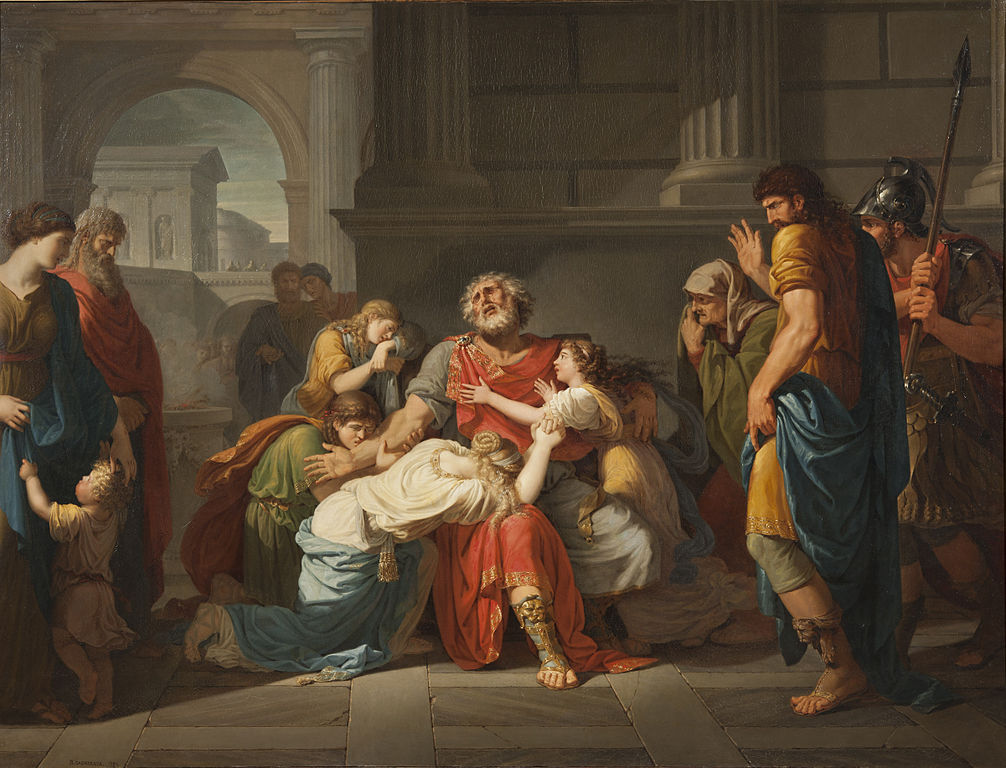


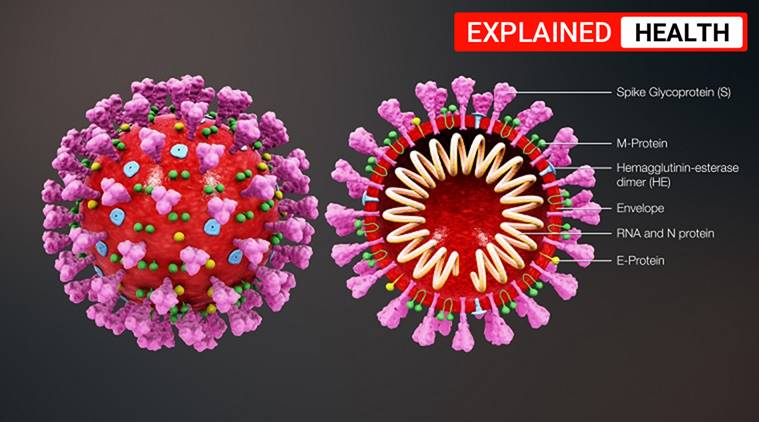
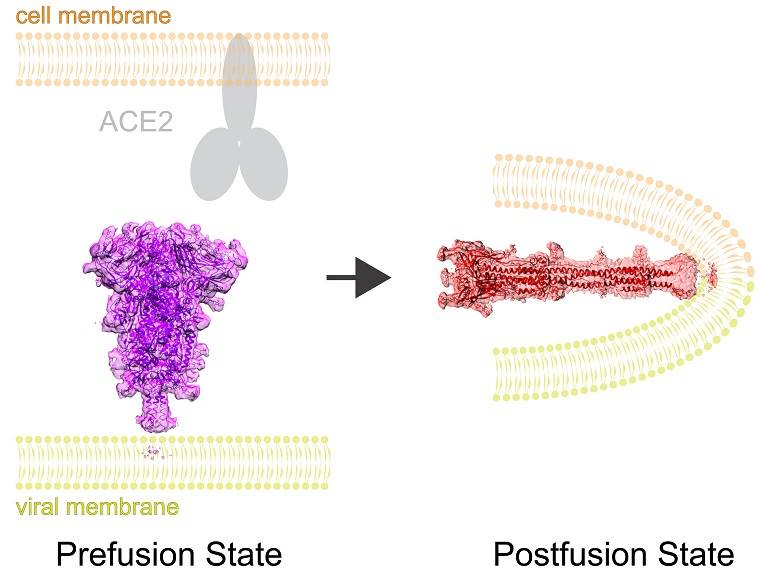 Cryo-EM images of SARS-CoV-2 before and after fusion with the human cell. Postfusion shape is like a rigid hairpin. (Source: Provided by Dr Bing, Chen, Boston Childrens Hospital)
Cryo-EM images of SARS-CoV-2 before and after fusion with the human cell. Postfusion shape is like a rigid hairpin. (Source: Provided by Dr Bing, Chen, Boston Childrens Hospital)
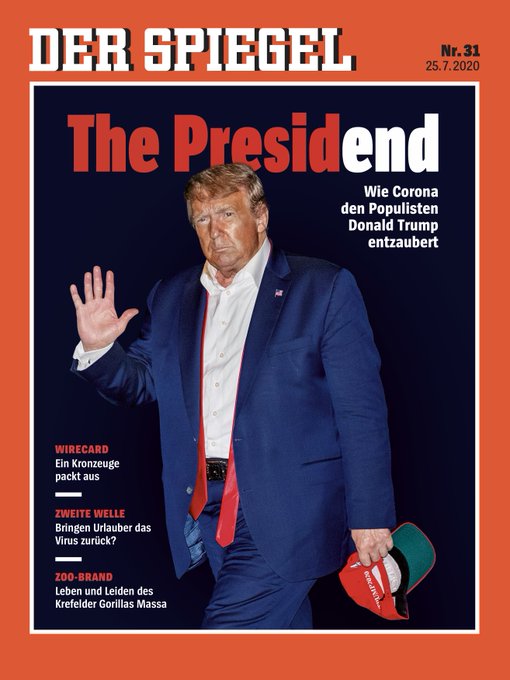
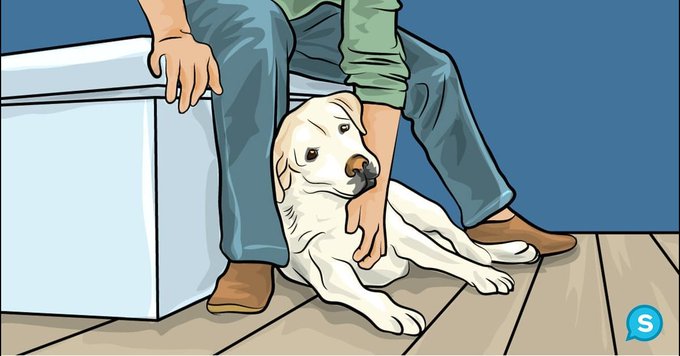
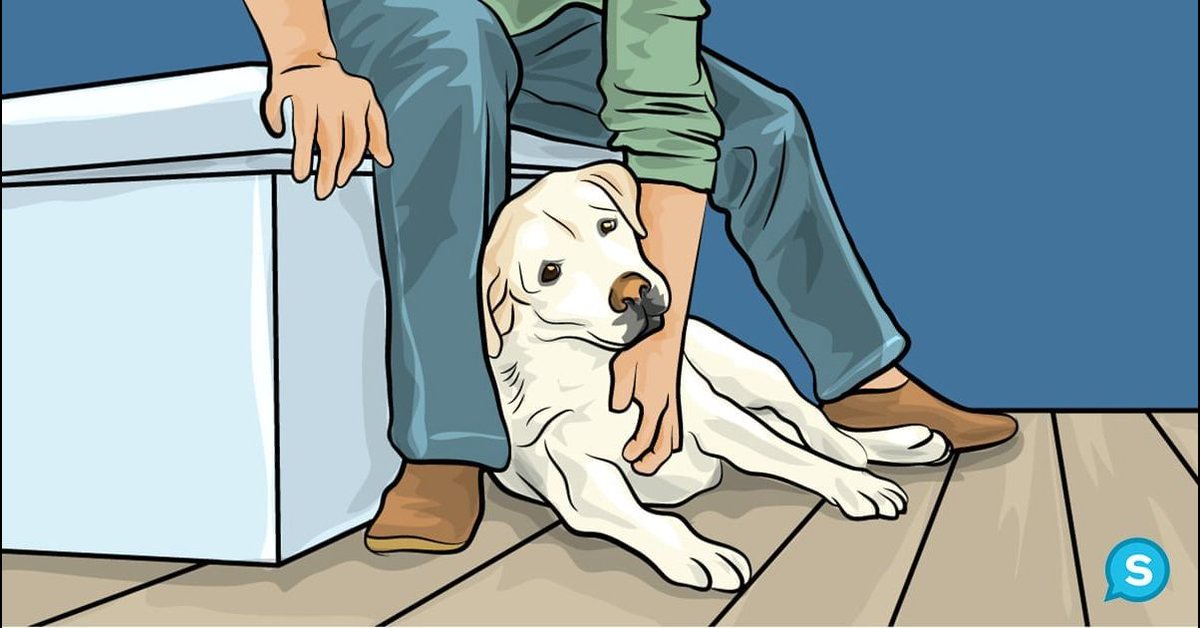

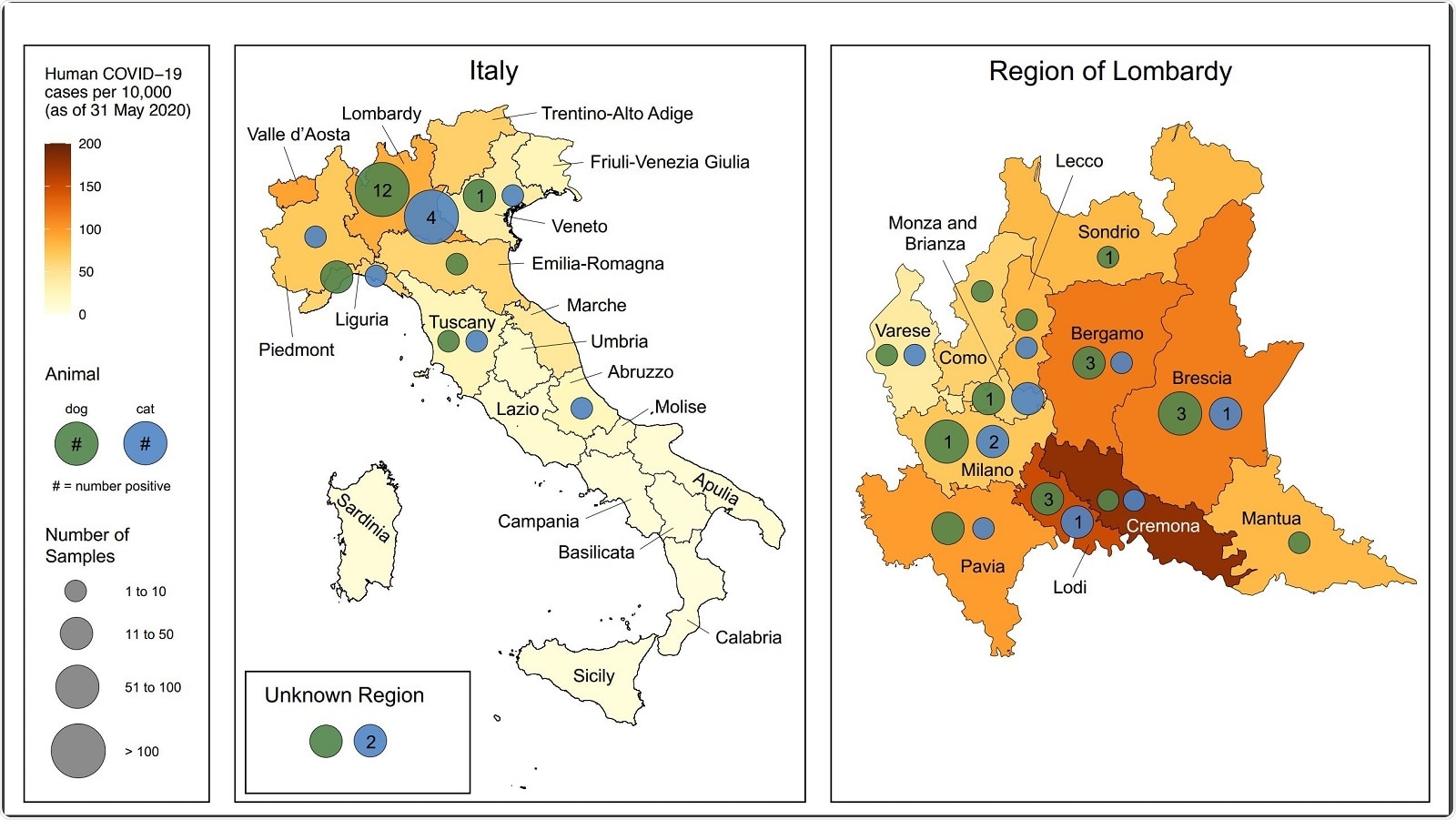
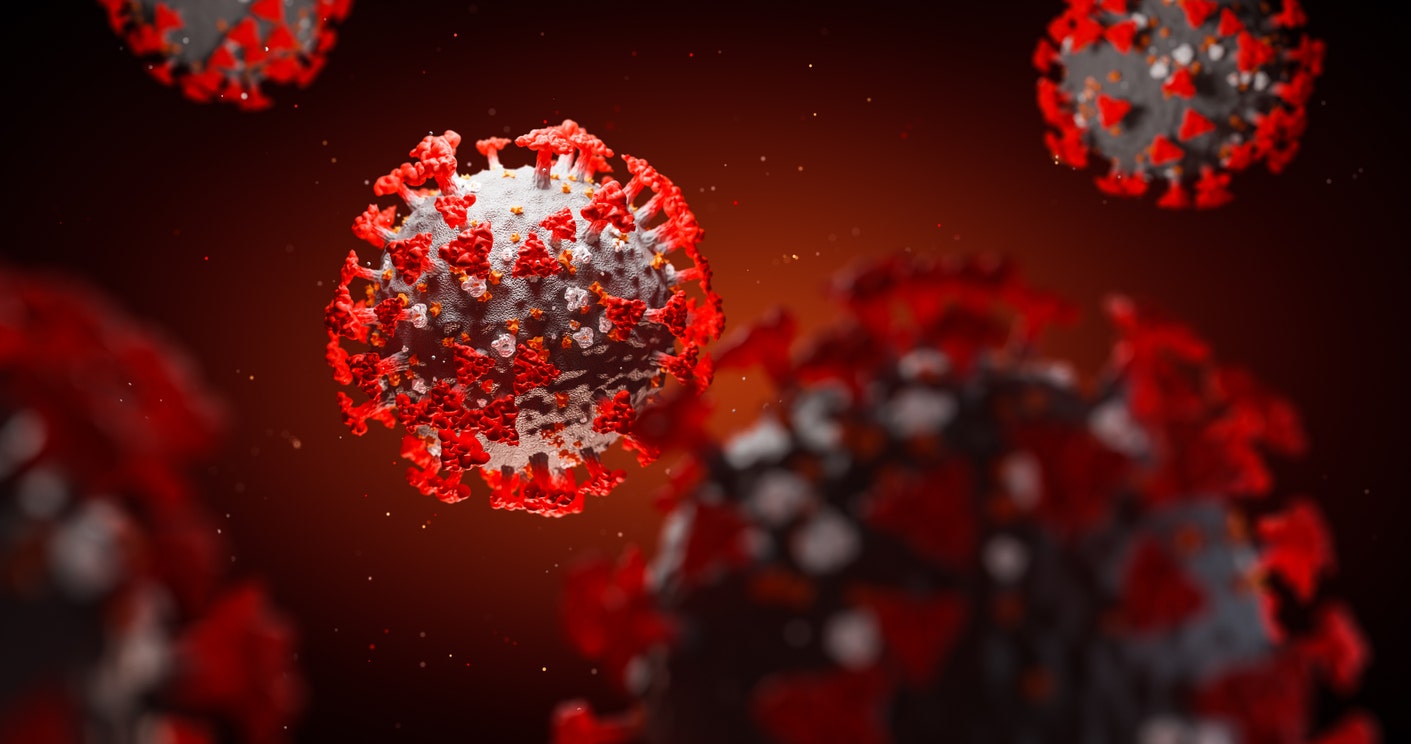


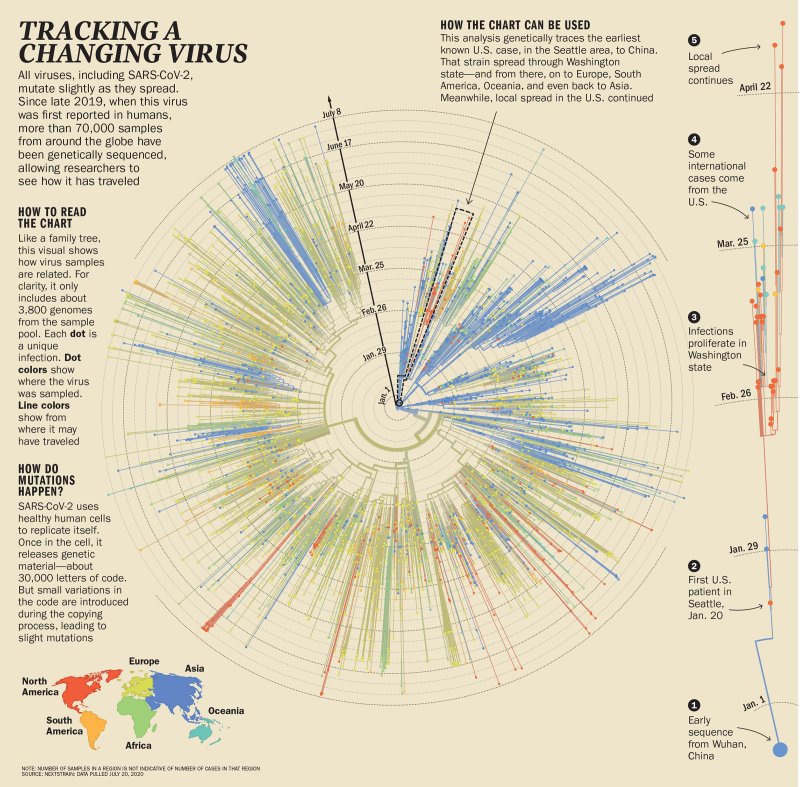





Comments
Post a Comment